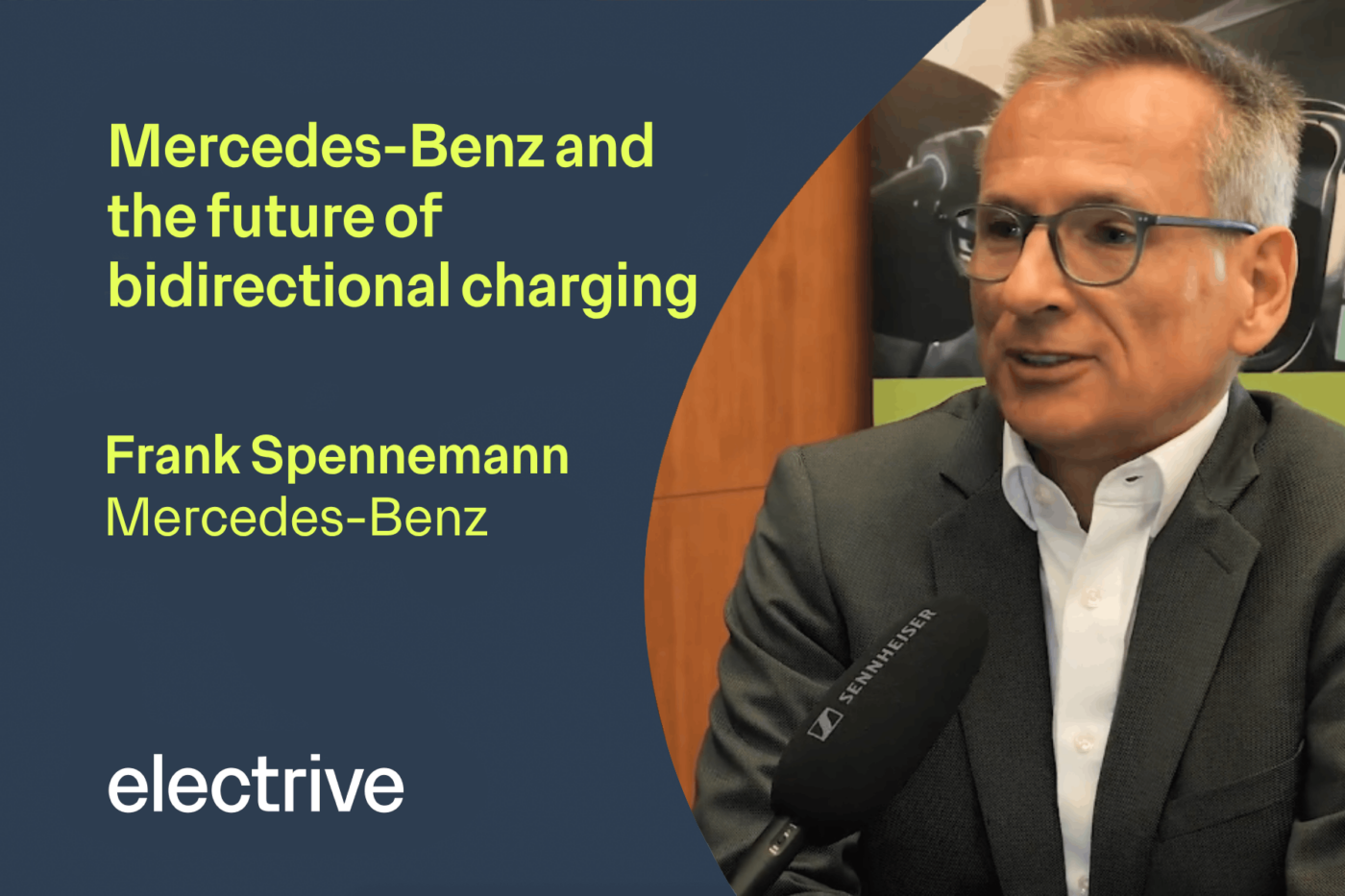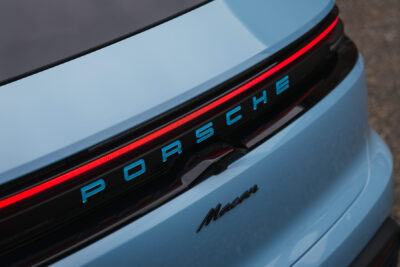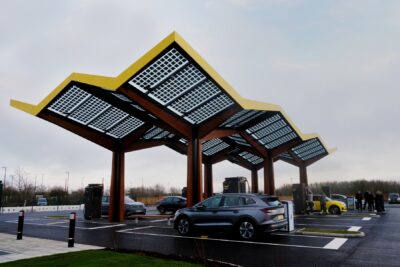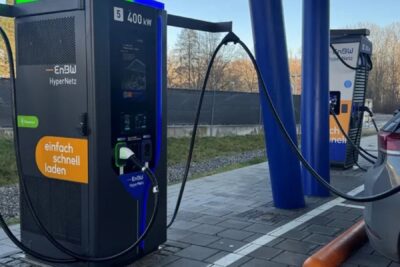Frank Spennemann from Mercedes-Benz: Mercedes and the future of bidirectional charging
One of the key questions in the industry is whether AC or DC will dominate bidirectional charging. “That’s a question which probably will be answered in the next five to ten years,” says Spennemann. While both technologies exist, he observes that around 80% of OEMs are starting with DC, as it is technically easier to integrate with the grid.
“If you feed into the grid, you have to comply with so-called grid codes, which are defined by the grid operator. With DC, the wallbox must meet these grid codes, whereas with AC, compliance is split between the car and the wallbox, making it more complex,” he explains. Given these factors, Spennemann expects DC to dominate in the initial phase.
Mercedes-Benz’s Roadmap for Bidirectional Charging
Mercedes-Benz is no newcomer to bidirectional charging. “We already have bidirectional cars on the market,” Spennemann confirms, pointing to models in Japan equipped with the CHAdeMO standard. However, for Europe and other markets, the automaker is focusing on a universal solution based on the ISO 15118-20 standard.
“We are absolutely convinced that bidirectional charging only makes sense if it’s interoperable. It has to be based on a standard,” he states. The company’s next generation of EVs will fully integrate bidirectional capabilities, providing customers with new ways to interact with the grid.
But when will we see this technology implemented in European fleets? “As mentioned, we intend to introduce it with the next generations of our vehicles, and you will see it when they hit the market,” Spennemann says.
Mercedes-Benz envisions three main benefits for customers. “A standard European household consumes around 10 kWh of energy per day. Our EQS, with a 110 kWh battery, could power a home for more than a week during a power outage,” Spennemann highlights. This capability is particularly relevant in markets like the US, where grid instability is a concern.
Additionally, bidirectional charging can help EV owners maximise the use of their solar panels. “People with PV installations want to be self-sufficient. A bidirectional car, ideally combined with a small home storage system, allows them to store solar energy during the day and use it at night,” he explains.
Beyond energy security, V2G technology can create new revenue streams. “The energy grid desperately needs flexibility and is willing to pay for it. In Germany, for example, the total maximum power load is around 70 to 80 gigawatts. That equals 7 million cars connected—about 15% of the passenger car fleet. This is real power,” Spennemann states.
According to his estimates, EV owners could earn between €400 and €700 per year by feeding energy back into the grid. “The exact amount depends on the vehicle, charging behaviour, and other factors, but the potential is significant,” he notes.
On a broader scale, integrating bidirectional EVs into the grid is essential for achieving renewable energy goals. “All research institute simulations rely on bidirectional cars playing a role in stabilising the grid and supporting the energy transition,” Spennemann stresses.
Regulatory Hurdles: The Main Roadblock
Despite the technological progress and clear advantages, bidirectional charging faces regulatory challenges—particularly in Germany. “The biggest issue is double taxation,” Spennemann points out.
Currently, when energy is stored in a vehicle and later fed back into the grid, it is taxed twice, significantly reducing financial incentives. “With these levies, the customer won’t see any value. And if there’s no financial benefit, there’s no motivation to invest in a bidirectional wallbox,” he explains.
For bidirectional charging to take off, policymakers must address these regulatory barriers. Without adjustments, even the most advanced EV technology will struggle to reach mass adoption.
“The cars are coming, the standards are there, and implementation is underway,” Spennemann assures. But for bidirectional charging to become mainstream, industry players and policymakers must work together to remove barriers and unlock its full potential. As the EV revolution accelerates, the ability to use vehicles as dynamic energy assets could redefine the relationship between mobility and electricity.
For those eager to explore the potential of bidirectional charging, The Smarter E will feature a Special Exhibit Bidirectional Charging from May 7–9, 2025, in Munich. The exhibit will be located in Hall C6, Booth C6.450, next to the Power2Drive Forum.





1 Comment